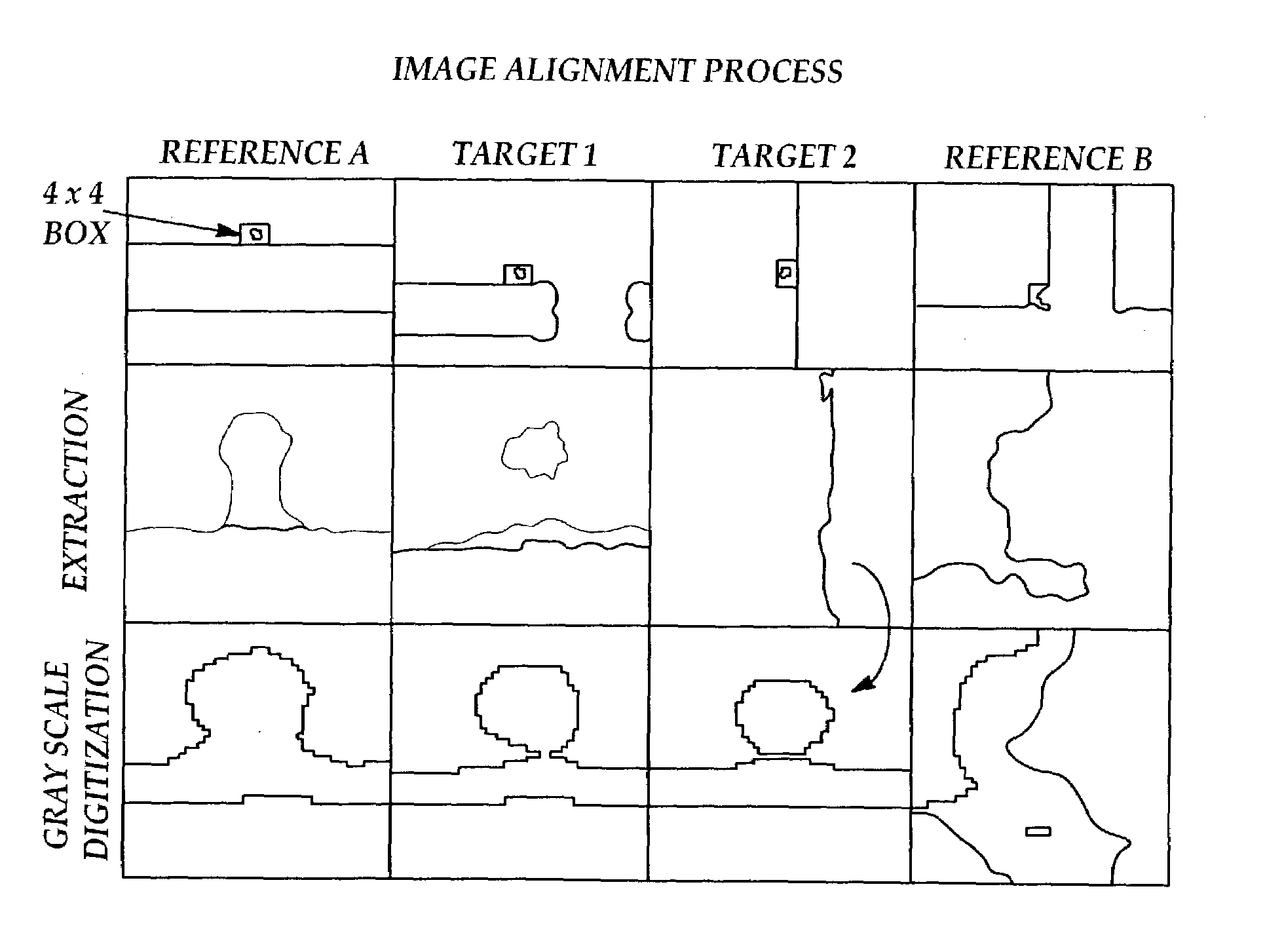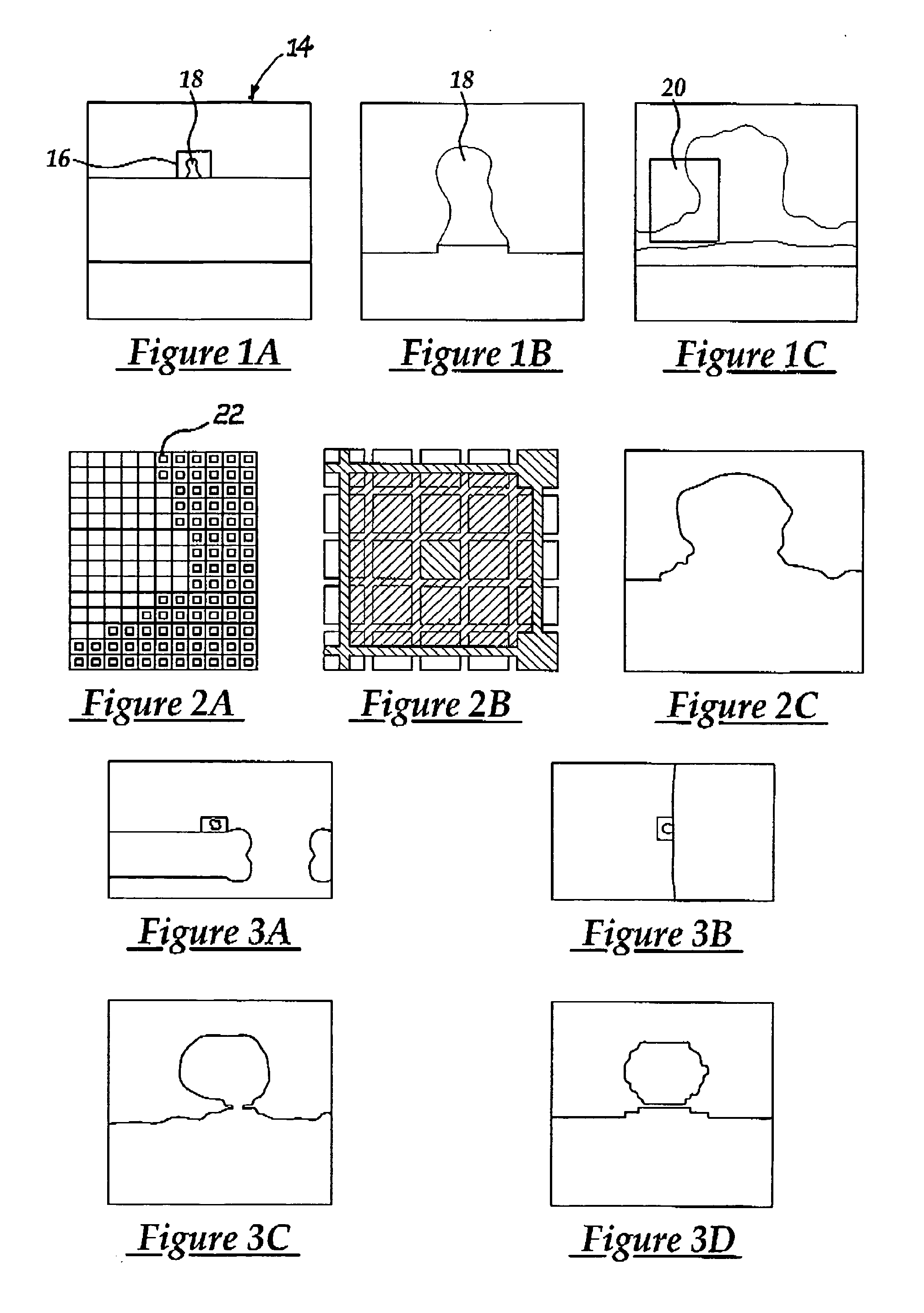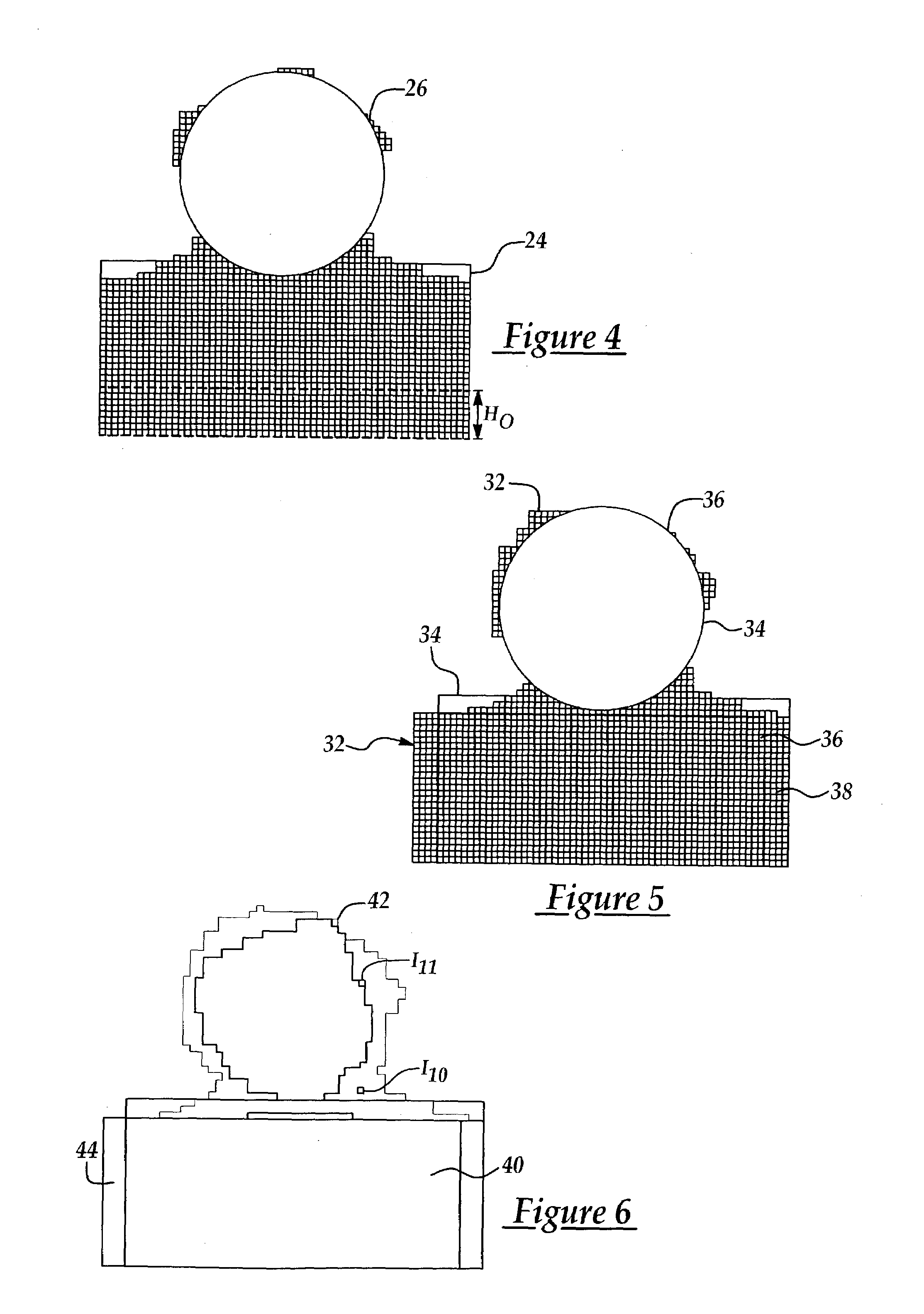Progressive self-learning defect review and classification method
a self-learning and defect technology, applied in the field of progressive self-learning wafer defect review and classification method, can solve the problems of long mask writing time, lack of hardware development in mask inspection, and long conversion time for fracturing, so as to accelerate the timing of the classification process and reduce the loading time of operators
- Summary
- Abstract
- Description
- Claims
- Application Information
AI Technical Summary
Benefits of technology
Problems solved by technology
Method used
Image
Examples
Embodiment Construction
[0043]The present invention provides a progressive self-learning (PSL) method for enhancing wafer or mask defect review and classification by identifying a plurality of photomask or wafer defects, and classifying each of the plurality of defects according to an extent of resemblance of each defect.
[0044]Successful implementation of the PSL method to classify mask or wafer defects will reduce an operator's loading time and accelerate the timing of the classification process. Also, the PSL method will automatically classify same type of defects without the need for additional human intervention. The PSL method is particularly beneficial for use in a stage of wafer or mask process developing, wherein repetitious types of defects are frequently observed. The PSL method also provides a step for automatically categorizing nuisance defects.
[0045]The PSL method of the present invention performs five basic steps to enhance the efficiency and accuracy of a wafer or mask defect review and defe...
PUM
 Login to View More
Login to View More Abstract
Description
Claims
Application Information
 Login to View More
Login to View More - R&D
- Intellectual Property
- Life Sciences
- Materials
- Tech Scout
- Unparalleled Data Quality
- Higher Quality Content
- 60% Fewer Hallucinations
Browse by: Latest US Patents, China's latest patents, Technical Efficacy Thesaurus, Application Domain, Technology Topic, Popular Technical Reports.
© 2025 PatSnap. All rights reserved.Legal|Privacy policy|Modern Slavery Act Transparency Statement|Sitemap|About US| Contact US: help@patsnap.com



